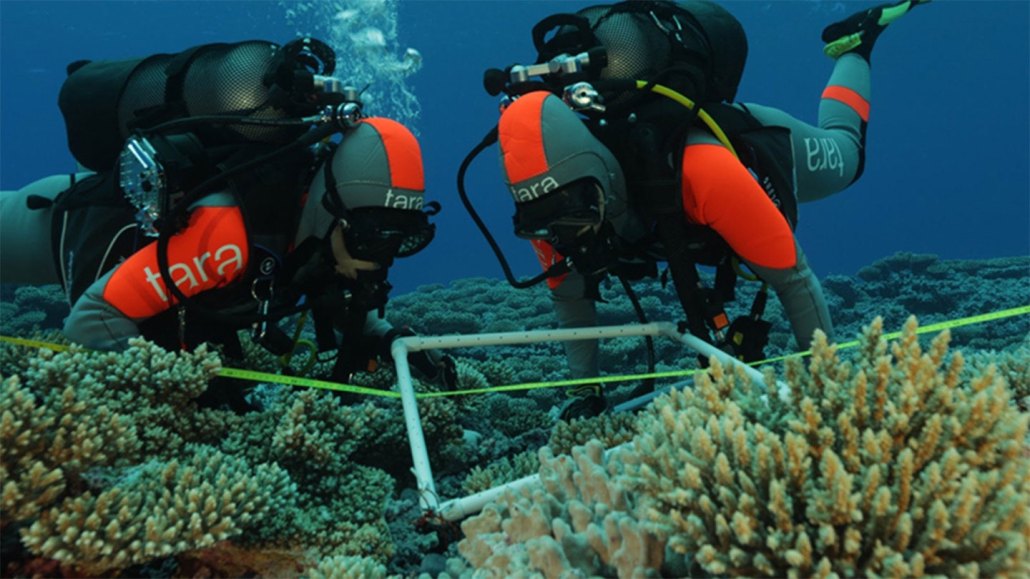
Researchers collect samples from a coral reef as part of the Tara Pacific Expedition, an effort to document biodiversity in reefs across the ocean.
Pete West/Tara Ocean Foundation
- More than 2 years ago
Coral reefs are hot spots for more than fish.
Fish and corals in reefs across the Pacific Ocean may harbor nearly 3 million varieties of bacteria, researchers report June 1 in Nature Communications.
That means scientists are vastly underestimating Earth’s microbiome, microbiologist Pierre Galand of Sorbonne University in Paris said at a May 31 news conference. The new count of bacteria living in the Pacific Ocean’s coral reefs alone falls within current estimates for the total microbial diversity of Earth, suggesting that there exponentially more bacteria living on the planet than previously thought.
Coral reefs are among the most diverse ecosystems on Earth, and microbes are key for keeping the captivating creatures that live there healthy. Bacteria can help corals get the nutrients they need to survive or guard against disease. A dose of probiotics may offer protection from deadly heat stress (SN: 8/13/21).
But the biodiversity of these reef-dwelling microbes is unclear. Most studies examine animal species in a small area or focus on only one species. And global surveys are hard to do.
During the Tara Pacific Expedition from 2016 to 2018, Galand and colleagues visited 99 coral reefs. At each site, they collected samples from plankton, three coral species and two fish species, amassing 5,392 samples. The team then categorized how many varieties of bacteria they could find in each sample, based on genetic differences among microbes.
“The word species doesn’t really work well for microbes,” says Jennifer Biddle, a microbial ecologist at the University of Delaware in Lewes who was not involved in the study. It’s difficult to compare physical characteristics like shape or color to separate such small and hard to see organisms into distinct species.
But genetic analyses identified more than 540,000 bacterial varieties living on the three types of organisms. That number alone — from a tiny fraction of Pacific reef fauna — accounts for up to about 20 percent of current estimates of all bacteria living on Earth, which range from 2.72 million to 5.44 million. Based on how many species of fish and corals live in the western and central Pacific, coral reefs from that ocean alone may harbor at least 2.8 million kinds of bacteria, the team calculated.
Such diversity may be a kind of “ecological insurance” for reefs, Galand said. For instance. multiple types of bacteria may help coral polyps in the same way, such as making sure the coral-building creatures get a key nutrient. With so much diversity, some bacteria may easily be able to replace others that are in trouble when something like high temperatures cause the bacterial population to crash (SN: 4/20/18).
The estimates may still be lowballing microbial diversity in Pacific reefs, Biddle says. It’s difficult to count something that’s invisible to the naked eye, and molecular tools to look at genetic material often exclude organisms that scientists are unaware of. “We’re always undercounting microbes with the methods we’re using.”






